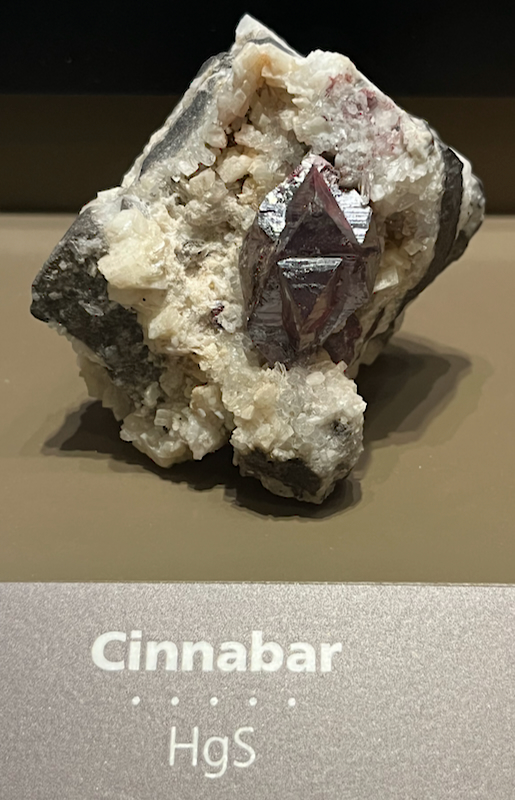Cinnabar
You may know of mercury as the silvery substance in thermometers that’s the only liquid metal (at Earth temperatures), but it occurs in other ways that you might not recognize. For example, the most common source of mercury is the super-red mercury sulfide called cinnabar (HgS). Cinnabar forms when hot water from volcanoes or hot springs that’s saturated with minerals, including mercury and sulphur, fills cracks in rock then cools and allows cinnabar crystals to solidify. If we want to use the mercury in cinnabar for industry or making thermometers, we can separate it back out. When cinnabar is heated, the sulfide (the element sulfur) burns off, leaving pure silvery mercury. On the other hand, when cinnabar is crushed, you get powder with the super-red color called vermillion that is used in paint that artists use. We know now that mercury is poisonous, but the painters of the past who used to lick their brushes to keep the bristles together were probably not too healthy if they liked to use vermillion paint. Aside from famous paintings, the other place you’d be likely to find cinnabar is in antique carved objects from China—bowls, plates, jewelry boxes—where cinnabar was mixed with lacquer that was used to coat the objects then was intricately carved to produce beautiful red designs.
| Formula | Group or Type | Shape | Hardness | Specific Gravity | Streak | Luster |
|---|---|---|---|---|---|---|
| HgS | — | Trigonal | 2–2.25 | 8.176 | Red-brown or scarlet | Adamantine to dull |


